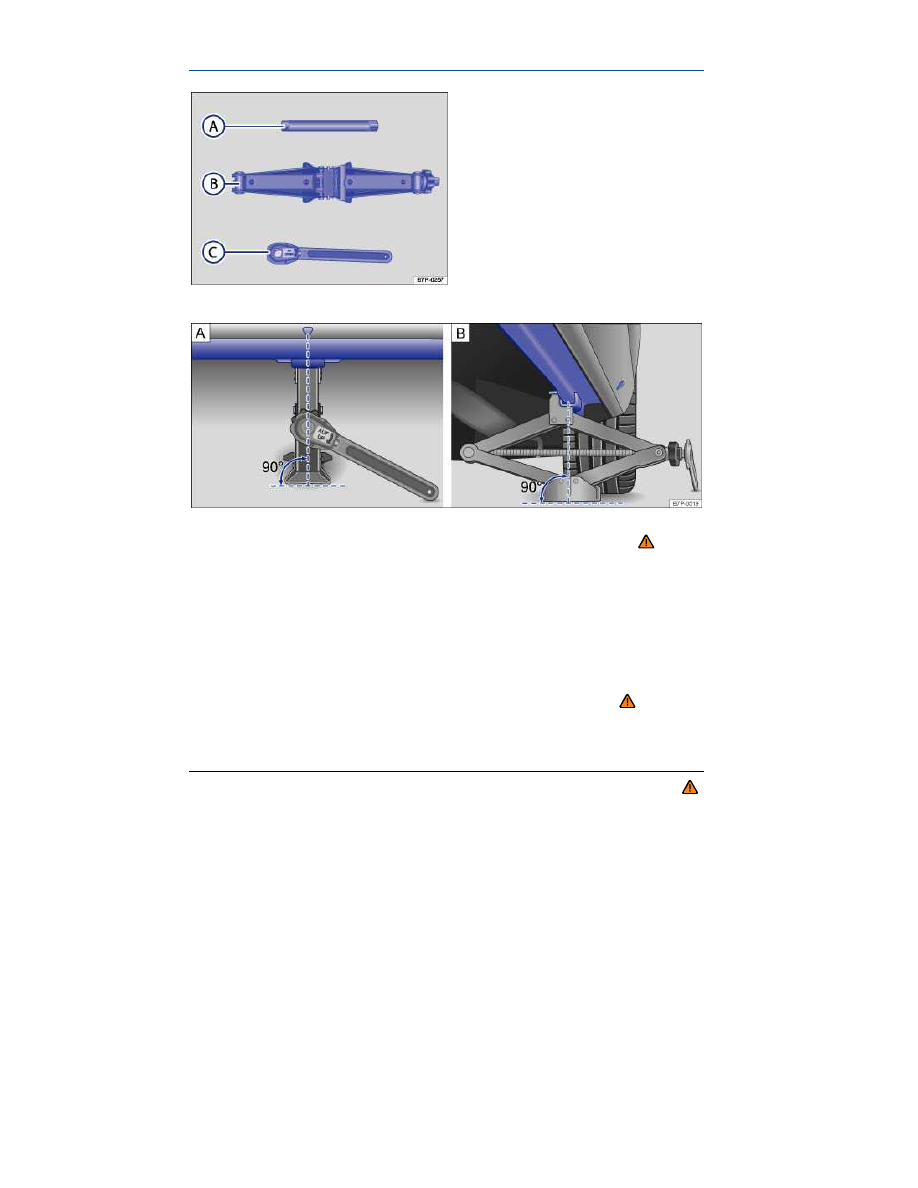Volkswagen Touareg (2015 year). Instruction - part 42

Lifting the vehicle with the vehicle jack (R Line)
Fig. 340 Scissor jack components.
Fig. 341 Jack in position at the left rear lift point.
Please first read and note the introductory information and heed the WARNINGS
The standard vehicle jack cannot be safely used to raise the vehicle when the side steps, extended
door sills or similar enhancements have been installed in the area of the lower side sills
Use only the scissor jack if your vehicle has side steps, extended door sills additional decorative trim
or other enhancements in the area of the lower side sill. Raise the vehicle only at the appropriate jack
points for the vehicle jack.
Always use the scissor vehicle jack supplied with the authorized side step package when the vehicle
must be jacked up, for example, to change a tire. This scissor jack is also available for purchase from
authorized Volkswagen dealers if your vehicle is equipped with authorized accessory side steps.
The jack must be positioned at one of the 4 lift points marked on the vehicle body (2 on each side as
shown in
⇒
fig. 338
). You must use the lift point closest to the wheel being changed
⇒ .
Do not jack up the vehicle until all the wheel bolts on the wheel being changed have been loosened
⇒
Wheel bolts.
Checklist
For your own safety and that of your passengers, carry out the following steps in the order listed
⇒ :
1. Find a level spot on firm ground for lifting the vehicle.